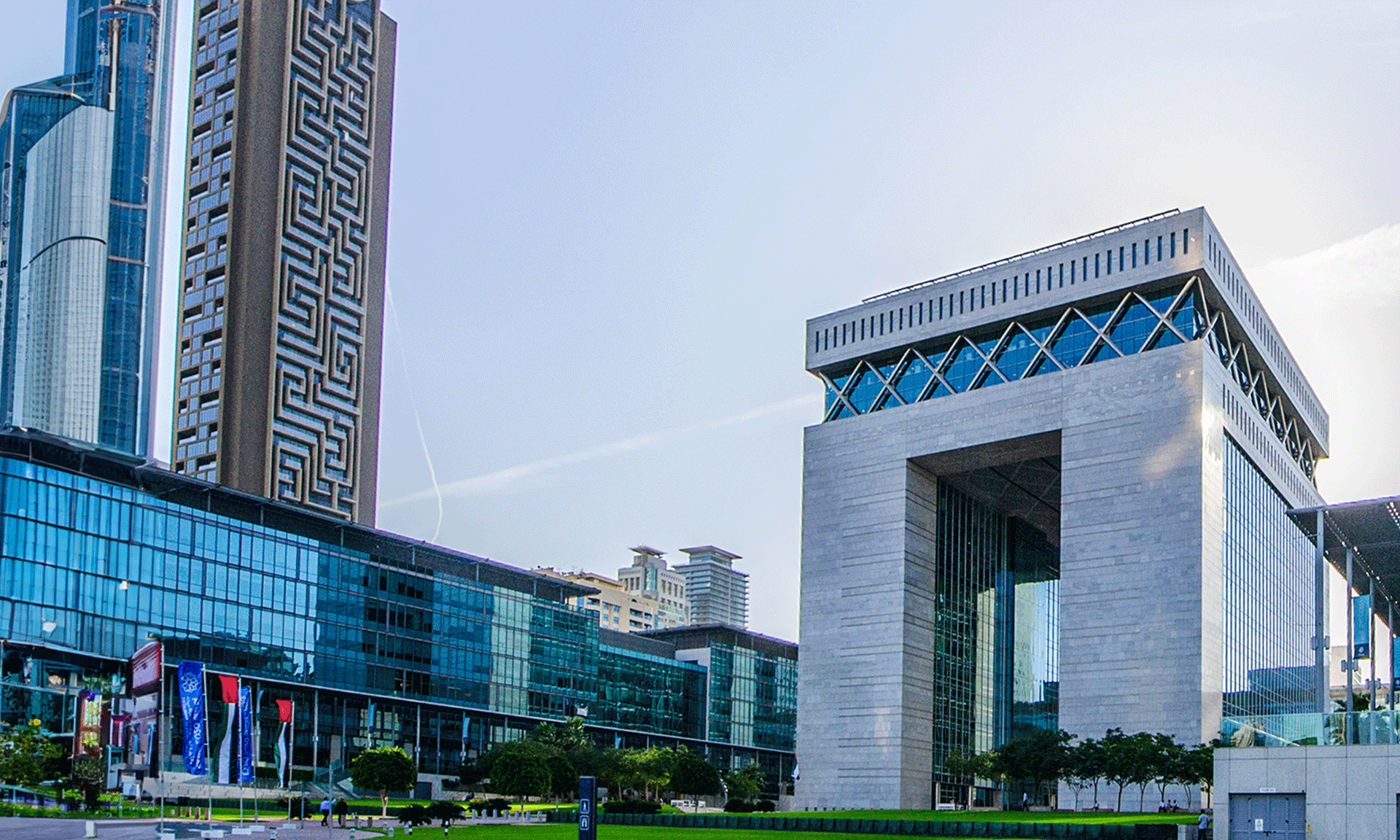
- Bahrain, Newsletter
- May 11, 2020
It goes without saying that the economic impact of the Coronavirus pandemic has been felt on a global scale. Consequently, this has created a number of unprecedented challenges for hundreds, if not thousands of businesses in Bahrain and throughout the Middle East. Various Middle Eastern tax authorities have taken supportive measures to benefit the different business sectors by extending compliance deadlines. According to experts, the following is a summary of these measures concerning the Bahrain business sector.
As of March 29th, of this year, the Bahrain MOICT (Ministry of Industry, Commerce, and Tourism) has confirmed an economic substance reporting deadline extension in response to the Coronavirus pandemic. Businesses with a fiscal year that ended on December 31st, 2019 will have until June 30th, 2020 to file their notifications and relative reports with the MOICT. The original deadline date was March 31st. Hopefully, this measure will benefit the different Bahrain businesses that have been impacted by this global pandemic.
Additionally, measures regarding economic substance regulation notifications have also been adopted by the following:
- ADGM and DIFC of the UAE
- DSO and RAKICC of Ras Al Khaimah
- Kingdom of Saudi Arabia
- Nation of Qatar
The media hasn’t addressed any other specific matters at this time, including deadlines for the filing of appeals and objections. To know more about the recent information on this subject, contact Intuit Management Consultancy (IMC Group). With years in the industry, we have assisted a myriad of companies with tax advisory services, business setup solutions, corporate advisory services, global mobility, bookkeeping and accounting among other services. Call us today.

- Newsletter, Oman
- May 11, 2020
As of March 31st, 2020, tax authorities are now providing tax relief for corporations that are currently doing business in Oman and have been affected by COVID-19 as well as any Government imposed precautionary measures that were put in place to counteract the pandemic in Oman. These measures include:
- deferral of filing returns and making tax payments for up to 3 months from the original due date of March 31st
- exemption from fines and penalties that are related to deferred filings and payments
- tax deductions for contributions or donations involved for handling the pandemic (must be in accordance with executive regulations and prescribed income tax laws
For example, if you haven’t filed your return or are making tax payments in installments, the deadline has been extended until June 30th from March 31st, the original due date. Any additional taxes or penalties for filing or paying after the deadline will be waived, provided taxpayers in Oman are able to prove that this was due to the COVID-19 pandemic, including any Government imposed precautionary measures. If you are looking for tax services in Oman, it is best to contact a company that can assist you through the whole process.
Additional Considerations where Donations, Installment Payments, and Objections to Tax Assessments are concerned
In addition to tax relief that applies to tax returns and tax installment payments, Oman Government authorities have made the following changes:
- Donations – donations towards measures that will prevent the spread of COVID-19 are fully tax deductible for Oman-based corporations according to Government tax laws and regulations.
- Installment payments – because of COVID-19, tax installment payments will be approved provided taxpayers can show that the delay has resulted from the pandemic. Any additional taxes that would normally be imposed will be waived.
- Tax returns and payments: To help corporates file tax returns and payments, it has been changed to 30th June 2020. This leverage has been given considering the COVID- 19 precautionary measures, so there are no additional taxes or penalties that would be applicable.
- Objections to tax assessments – any objections to corporate tax assessments that are filed after the March 31st due date will be accepted provided taxpayers can show proof that they’ve been adversely affected by the pandemic. Furthermore, any additional taxes or penalties that have been imposed on installments payments will be waived as a result.
For additional information regarding tax relief for corporations that have been negatively impacted by COVID-19, it is recommended that you seek the advice of professional tax services in Oman such as Intuit Management Consultancy (IMC Group).

- Newsletter, Saudi Arabia
- May 11, 2020
On March 20th, the Saudi Arabian Ministry of Finance published the details of its economic relief measures to benefit businesses that have suffered during the COVID-19 pandemic. The following is a detailed listing of the measures that apply to taxpayer obligations that fall within the period of March 18th through June 30th:
- Filing deadlines for all returns including income tax, WHT (withholding tax), VAT, and zakat, are extended for a 3-month period beginning with the original due date.
- NO restrictions will be placed on the issuance of tax and zakat certificates that expired during the fiscal year of 2019.
- Payments on expatriate levies, extension fees on exit and re-entry visas, government service fees such as municipal fees, and work visa fees will be waived, subject to certain conditions.
- Tax payment deadlines including excise tax, income tax, VAT, WHT, and zakat are extended for a 3-month period beginning with the original due date.
Be aware that the Ministry of Finance statement doesn’t address certain issues such as the filing of tax appeals and objections. The GAZT (General Authority of Zakat and Tax) and the GSTC (General Secretariat for Tax Committees) has issued prior notifications relative to hearings by the Internal Settlement Committee. Additionally, various appeal committees are suspended pending further notice.
Your business needs the assistance of professionals and that is where Intuit Management Consultancy (IMC Group) steps in. We can assist your business with business set-up, tax consultations, corporate advisory services, international tax structuring, filing taxes, VAT and more.

- Newsletter, U.A.E
- May 11, 2020
According to financial experts in United Arab Emirates, Government regulatory authorities have amended or confirmed the filing deadlines for their annual filing notifications in their respective free zones. Pursuant to current economic substance regulations, these updated notification deadlines apply to the following entities:
Abu Dhabi Global Market (ADGM) – the March 31st notification deadline no longer applies. Unfortunately, no updated deadline is available at this time.
Dubai International Financial Centre (DIFC) – as with the ADGM, the March 31st notification deadline no longer applies. Regardless, the DIFC confirmed that filing it during the 2nd quarter of this year is still required. However, as of this notice, the deadline is yet to be announced.
Dubai Silicon Oasis Authority (DSO) – the deadline for filing the notification was March 31st.
Ras Al Khaimah International Corporate Centre (RAKICC) – the deadline for filing the notification is June 30th.
These economic substance notification deadlines apply to the following businesses:
- Banks and financial institutions
- Business or corporate headquarters
- Businesses that manage investment funds
- Distribution businesses
- Holding Companies
- Insurance businesses
- Intellectual property or IP businesses
- Lease-finance businesses
- Service centers
- Shipping business
Regulations are in place to provide definitions of the activities listed above and apply to financial years beginning January 1st, 2019. If you are looking for business consultation or advisory services, contact Intuit Management Consultancy (IMC Group).
Offering the services of experts with in-depth knowledge about global mobility, international tax structuring, VAT and tax filing services in the UAE. Call us today.

- Article, Singapore
- May 4, 2020
Financial statements are written records of the entity that provide its financial situation at a given point in time. These statements are used by the shareholders, investors, management, the board of directors, employees, suppliers, customers, bankers and other related stakeholders to get an overview of the financial results and condition of the business.
Financial statements comprise of three main components balance sheet, profit and loss statement and cash flow statement. Each of these components is crucial for understanding the financial affairs of the business. Besides, they also help in making sound business decisions.
So, let us understand these components in detail.
Key Components of Financial Statements
1. Balance Sheet
Balance sheet reflects the financial position of the company at a specific period. It shows the assets owned by the company on one side and sources of funds or resources used to own such assets and the amount of shareholding on the other side. The balance sheet depicts the financial strength of the company. Let us understand the components of the balance sheet in detail.
-
Assets
Assets include tangible assets (in the form of fixed assets and current assets) as well as intangible assets (in the form of rights and other non-physical resources that add value to the business).
-
Liabilities
Liabilities include the debts of the entity and any obligation that might arise during the course of business. In simple words, these are amounts owed to lenders and other creditors. Liabilities include current liabilities (in the form of bills payable, creditors, etc.) and non-current liabilities (in the form of term loans, debentures, etc.).
-
Equity or Owner’s Equity
The owner’s equity is also termed as capital contribution by the owners. It is the balance amount that is arrived after deducting the liabilities from the net assets of the company. Practically, this is the capital available for distribution to shareholders in case of an event like liquidation. Owner’s equity includes capital contributed by the shareholders, retained earnings and reserves.
2. Profit and Loss Statement
Profit and loss statement reflects the financial performance of a company over time. In simple words, it is a statement of revenues earned and expenses incurred to earn those revenues. Excess of revenues over expenditures result in profit and vice versa result in loss. Let us understand the components of profit and loss statement in detail.
Revenue
Expenses
Gains
Losses
3. Cash Flow Statement
Cash flow statement shows the liquidity position of a company. It helps to understand the sources of cash and utilization of cash. In other words, this statement summarises the actual as well as anticipated cash inflows and outflows of a business over an accounting period. Let us understand the components of cash flow statement in detail.
-
Cash Flow from Operating Activities
It refers to all the cash flows from the operating activities of a business. These include production, sales and delivery of products, payment from customers, inventory costs, advertising, etc.
-
Cash Flow from Investing Activities
It refers to cash flows that arise as a result of investments. It includes gain or loss from investments, purchase of assets, etc.
-
Cash Flow from Financing Activities
It refers to cash flows resulting from borrowing, repaying investors or raising capital for the business. It includes cash dividends, debt or interest repayment, etc.
Conclusion
The financial statements provide an insight into the financial position of a company. They act as an important source of information for making financial decisions and framing business strategies related to finance and accounting.

- Newsletter, U.A.E
- April 29, 2020
JAFZA (the Jebel Ali Free Zone) has become the most recent Dubai jurisdiction to allow Dubai International Financial Centre (DIFC) Foundations as direct shareholders and/or incorporators in registered entities. This is a big step forward when it comes to business consolidation and growth.
Why is this so important?
The acceptance of these foundations is literally a game-changer when it comes to the structuring of UAE real estate assets. As one of the largest, most reputable free zones in this region of the world, JAFZA and JAFZA IBC’s (its offshore counterparts) have long been recognized as the go-to option for the registration of real estate holdings in the Dubai region. This marks a new beginning in the real estate sector and shows immense opportunity for growth.
The relationship between DIFC Foundations and JAFZA addresses key concerns of many entrepreneurs and investors such as asset protection and legacy planning. In the past, these concerns could’ve only been addressed by fully restructuring the legal process involved in the transference of property ownership. By making it seamless and easier to access than before, the interest that has been generated is newsworthy.
JAFZA IBC’s Before
- Using a sub-vehicle to consolidate; individual share holding
- No legacy planning strategy
- assets subject to probate in case of death
- dilution equates to destruction of value
- Poor asset protection against creditor attacks, divorce, etc.
- Poor value – requires double legalization
JAFZA IBC’s After
- Consolidated under a single planned structure; asset segregation by class
- Smoother intergenerational succession
- NO authorities involved
- NO dilution equates to better income protection
- NO family disputes
- Protection against attacks
- Privacy
- Increased cost-effectiveness
Additional Considerations
As self-owned entities, DIFC Foundations have a personality that is distinct from that of their founders. They are compatible with a range of asset classes in the UAE including investment portfolios, real estate, and shares. Furthermore, they enable business owners and entrepreneurs (as well as their families) to consolidate and maintain control over their investments and other income-generating assets. This shall help bring better financial stability in the market.
At the same time, these individuals are protected against potential risks such as creditor attacks and probate. Most importantly, Muslims and non-Muslims alike will benefit from their efficacy as a financial tool. JAFZA’s action coincides with the introduction of a number of economic improvement measures put forth by the DIFC as a response to the COVID-19 pandemic. This includes waiver of all registration fees for the specific scope industries and for the foundations. Thus, business can look forward to optimizing their high value assets with ease.

- Article
- April 28, 2020
A trademark is a sign that one can use to distinguish their business’ goods or services from those of other traders. Trademark includes any word, name, symbol, device, or any combination, used or intended to be used to identify and distinguish the goods/services of one seller or provider from those of others, and to indicate the source of the goods/services.
Why is it important to register your trademark and its benefits?
Trademarks are used in order to separate the products/services of one business from the competitors. It gives a unique identity to the owner of the registered trademark and in this competitive commercial world, the importance of having a unique identity for the target customers cannot be overstated.
Few of the benefits of registering a trademark are:
- Exclusivity: A registered trademark is protected by trademark laws and can be exclusively used by a business. Other businesses are legally prohibited from copying a registered trademark. Registered owner can also capitalize on the registered trademark by licensing it to third parties or selling it for a value.
- Market Value: If a business has a registered trademark, then the owner may benefit from its increasing market value.
- Tax Benefits: A registered trademark owner may receive tax rebates from the Government due to having a registered trademark.
- Advertising: A trademark may even communicate a message to the viewers through a design, word or logo.
- Burden of Proof: Even though an unregistered trademark enjoys certain protection, the burden of proof is higher when somebody is copying it.
- Use of Symbol: Once the mark is registered, you can use the symbol ® which symbolizes that the mark is registered with the authorities and added to the prestige of the company.
By association with a successful product or service, or by persistent advertising or even the vagaries of fashion, a mark may be built into an asset of prime value to a business, few of the example which stresses on the value of a trademark are – Apple ( trademark value $29.5 billion)* , Microsoft (trademark value $42.8 billion)*, Google (trademark value $44.3 billion)*.Therefore, it is a prudent step for all businesses, irrespective of the size of operation, to have a registered trademark.
If your business is looking to get a trademark, call IMC Group today.

- Newsletter, U.A.E
- April 23, 2020
The Federal Tax Authority (FTA) has introduced a VAT refund scheme in the United Arab Emirates for foreign businesses. With this scheme, all eligible non-United Arab Emirates established businesses will be able to submit the VAT refund requests for the calendar year 2019. However, the refund application needs to be made by 31st August 2020.
Which businesses can claim VAT refund?
Only specific foreign businesses will be eligible for the VAT refund paid on expenses incurred in the UAE. The eligibility criteria are as follows:
- The business must not have a place of establishment or fixed establishment in the UAE or other GCC implementing state.
- They are not a taxable person in the UAE (meaning they are neither registered nor required to be registered for VAT purposes).
- They are not carrying on a regular business or ongoing activities of a business in the UAE; and
- They must be carrying on a business and are registered as an establishment for VAT overseas.
Other conditions
FTA has further mentioned the minimum claim amount for each VAT refund application which is AED 2,000. This may include a single purchase or multiple purchases. Businesses aiming to claim refund must hold the original tax invoices / receipts of the purchases they would like to reclaim VAT. The same has to be submitted along with the refund application to the FTA
Further, businesses operating out of selected countries are only entitled to a VAT refund scheme. Below is the list of eligible counties:
- Austria
- Bahrain
- Belgium
- Denmark
- Finland
- France
- Kuwait
- Iceland
- Isle of Man
- Lebanon (in certain situations)
- Luxembourg
- Namibia (in certain situations)
- Netherlands
- New Zealand
- Norway
- Oman
- Qatar
- Saudi Arabia
- South Africa (in certain situations)
- Sweden
- UK
- Zimbabwe
- Switzerland
If you have incurred VAT in the UAE but your business is not established in the above mentioned countries, you might not be able to recover the VAT under this scheme. However, you can seek help from professional consultants to explore other options to reduce your VAT cost in the future.
IMC Group is a renowned VAT consultant in the UAE. Our VAT experts can assist you through the entire process of applying for a VAT refund and also help you minimise your VAT cost in the future by reviewing your supply chain structure. For more information, you can get in touch with us.

- Article, India
- April 22, 2020
It’s been nearly a year since President Mukesh Aghi of the USISPF (US-India Strategic and Partnership Forum) announced that 200 US companies are considering a move out of China into India after the 2020 general election. For those that are searching for a viable alternative to manufacturing base in the Communist nation, this is a tremendous opportunity for these companies. According to Aghi, these companies have been focused on investing in India since last year.
In an interview with Press Trust of India, Aghi stated that the recommendation made by USISPF would accelerate reforms and create more transparency when critical business decisions must be made. As a result, US companies are looking at the decision-making process while taking a domestic approach to data localization and e-Commerce rather than a global one. Aghi also suggested that these reforms need to be accelerated for doing business in India becomes more transparent during the process. He was of the view that Indian companies need to go all out to market their services and ensure streamlining the global supply chain services as these are critical issues. With much needed reforms in this area, it would lead to an increase in employment and job creation.
The need to entice these companies to relocate their manufacturing bases out of China is paramount. Furthermore, customs and land appropriation issues must be elements of the global supply chain. As a result, this could create thousands of employment opportunities for India company incorporation. In addition to the above, former Assistant US Trade Representative for South and Central Asian Affairs, Mark Linscott, is working with USISPF members to develop a recommendation for how the Indian Government can improve its exports.
It would appear that establishing a Free Trade Agreement between the US and India is the next logical step in the process if the US wants to avoid importing the same type of cheap goods that are currently coming out of China. A Free Trade Agreement will eliminate that concern by creating barriers to Chinese products while gaining access to the Indian market. At the same time, India would have more access to the US market.
Most importantly, issues such as a Generalized System of Preferences or GSP would diminish. A high-level manufacturing council has already been developed among member companies for the purpose detailing what India must do in order to become a manufacturing hub. As it currently stands, these member companies have invested over $50 billion over the past 4 years.

- Article, Singapore
- April 17, 2020
Audit Requirement
Holding Annual General Meeting
It is obligatory for Singapore companies to hold an annual general meeting (AGM):
- The Company must hold an AGM within six months after your company’s financial year end and file the annual return within seven months after company’s financial year end
Guide to Incorporating Your Business in Singapore: Essential Checklist
During such AGMs, the shareholders are entitled to discuss the following Ordinary Business:
- Dividend declaration
- Auditor’s reappointment
- Director’s re-election
- Remuneration for senior executives and directors
- Adoption of the audit report
- Transact any other business
Auditor’s Appointment
It is the duty of the directors to appoint the auditor within 3 months of the incorporation of a company in Singapore. However, the appointment of auditor and audit of financial statements is exempt if
A company qualifies as a small company if:
(a) it is a private company in the financial year in question; and
(b) it meets at least 2 of 3 following criteria for immediate past two consecutive financial years:
The company audit can be carried out only by a public accountant who is registered with The Accounting and Corporate Regulatory Authority (ACRA). The duty of the auditor is to report if the company’s financial statements represent a true and fair view. Besides, they also have to report if they comply with the singapore financial reporting standards and give an objective analysis of the company’s financial performance.
Audit Exemptions
Annual Filing Requirements
Companies are required to submit their financial accounts on an annual basis. It should include balance sheet, cash flow statement, comprehensive income statement and statement of changes in equity. Non-compliance to hold an AGM and late or non-filing of financial statements can attract penalties in the form of fines, summons or arrest warrants. If need be, you can outsource accounting services in Singapore.
Conclusion
In order to comply with the above regulations for company formation in Singapore, it is advisable for foreign investors to use the services of professional advisors like IMC Group who can help you stay compliant with these rules and regulations.
A Member Firm of Andersen Global
- 175+ Countries
- 525+ Locations
- 17,500+ Professionals
- 2350+ Global Partners


















 IMC Group
IMC Group